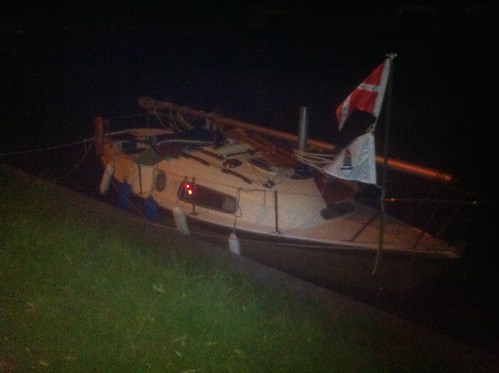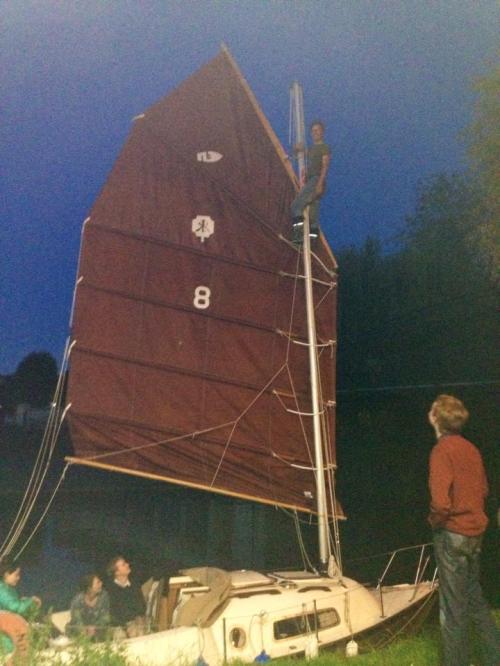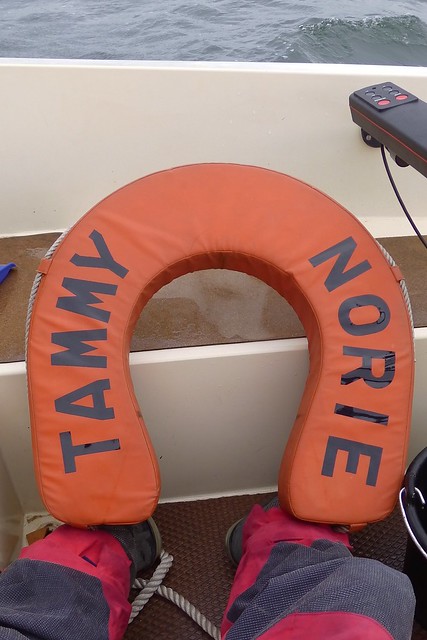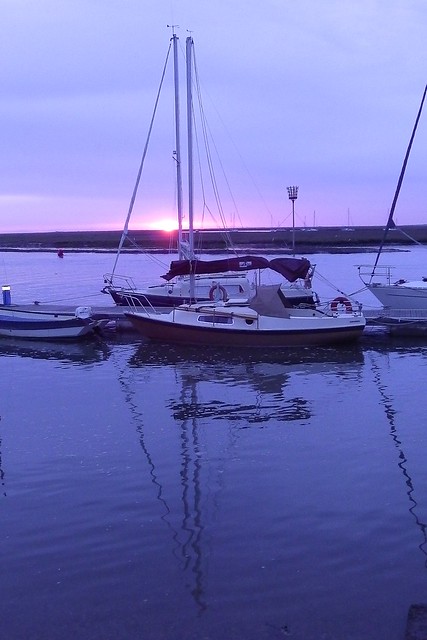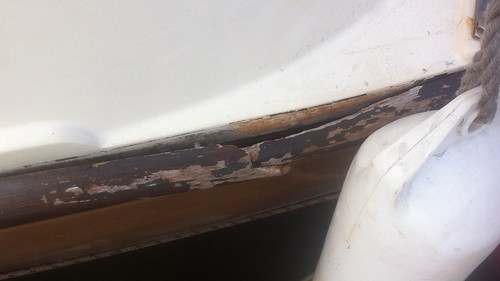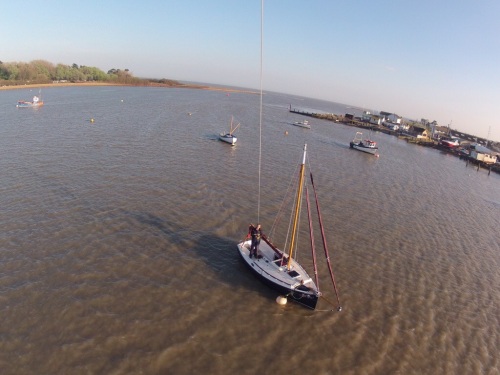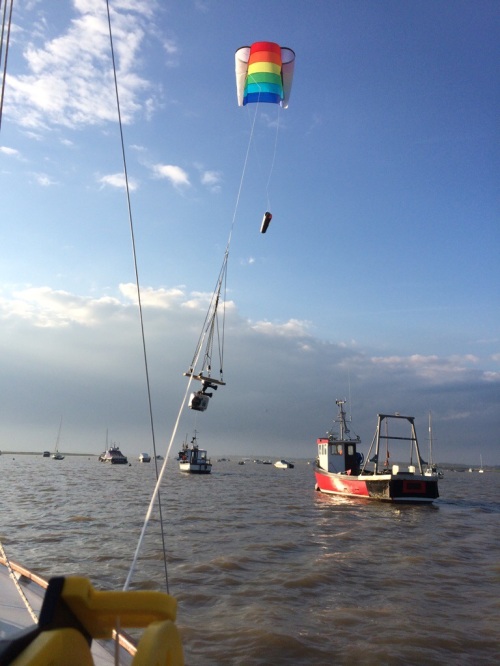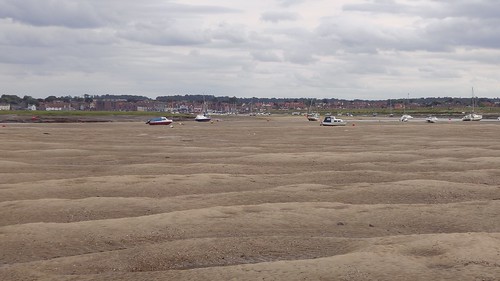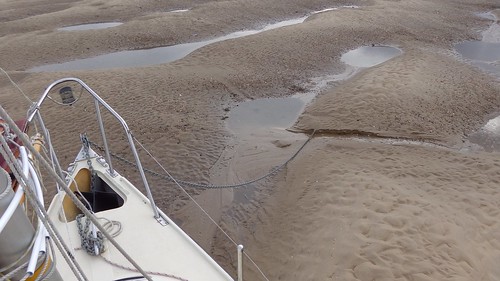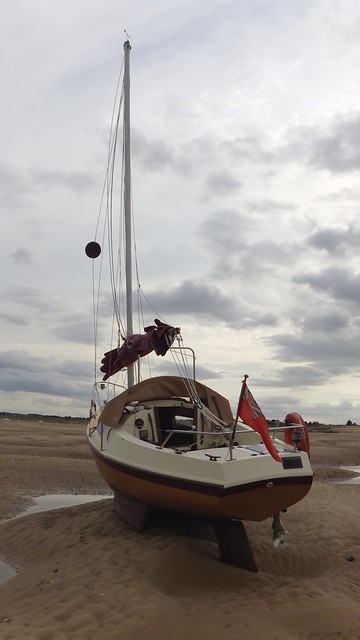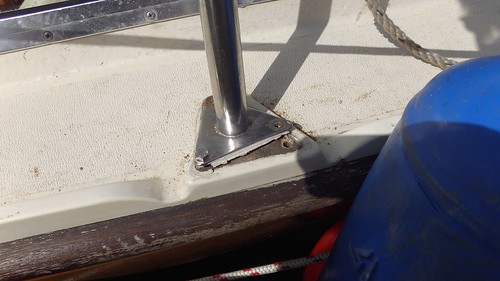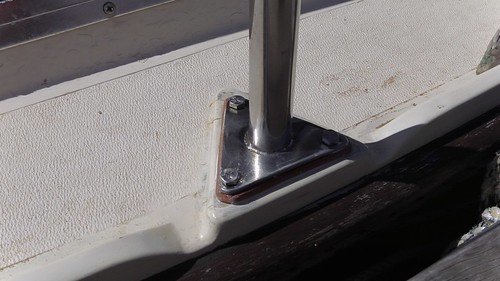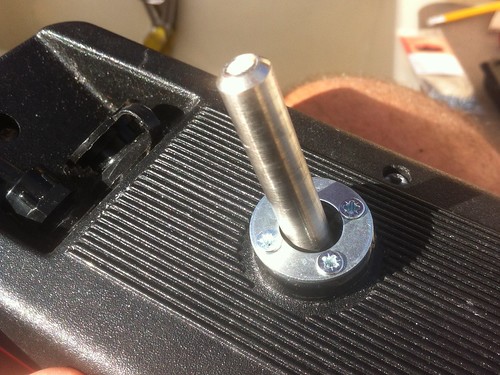It was very hard getting Tammy Norie off the beach at Sea Palling, and by 06:00 I was already exhausted and would have liked to have taken the rest of the day off to tinker with the boat. But the weather was due to turn from easterly force 5s to westerly force 8s by the evening as ex-hurricane Bertha tracked into the North Sea.
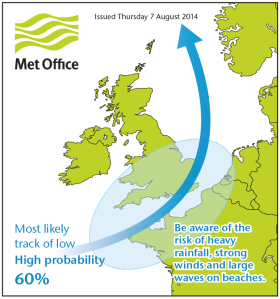
The track of ex-hurricane Bertha
I had to get going to Blakeney or Wells. And I was already shattered. So, after breakfast and a breather on the anchor I set off westwards.
There isn’t much to tell you about the actual journey. This part of the Norfolk coast has very little of interest from the sea. Tammy Norie was against the current for the first hour or so, but still managed 4.5 knots over the ground. When the current turned she was making 6 knots. The sea was moderate and the motion pleasant. The sailing was no problem at all. No problem. No prob…
Was I asleep just then?
I’ve always had a problem controlling sleep. I sometimes joke that I can sleep standing up. I have fallen asleep during conversations. I can sleep anywhere, and when I’m tired I don’t have a choice. I simply sleep. Other people say that they’re jealous of my ability to take naps or sleep during the day. On the other hand, people are sometimes a little put out that I allow myself to sleep. The thing is, it’s not voluntary. I don’t really have a choice. When I’m tired, I will sleep.
Sometimes I’ve wondered if I’m borderline narcoleptic. I’ve had one spell of post-viral fatigue syndrome where I couldn’t stay properly awake for months. (Fortunately, it didn’t turn chronic.)
Now, this could be a blessing or a curse for a solo sailor.
The ability to take naps and drop in and out of sleep could be very valuable, since a solo sailor has to wake up frequently to keep a look-out, especially for approaching ships. Solo sailors set alarms to wake themselves up every 10-15 minutes at night. During the day, if visibility is good, you can afford to sleep for longer.
But what if I can’t stay awake when I need to? What if I’m crossing a shipping lane when tired and nod off? I know from experience that I can’t simply will myself to stay awake.
Well, here on this short journey from Sea Palling, was a chance to test myself.
I took myself far enough off shore that I wasn’t seeing any lobster pots, set my iPhone alarm for 10 minutes, and sat still. That’s all it took. Suddenly it was four minutes later. I’d been woken by a large wave throwing Tammy a little off course. This pattern repeated itself. I was sleeping quickly, but being woken by changes in rhythm. After a while I started sleeping for eight or nine minutes. Never once was I woken by the alarm, though, and I wonder if I was getting any real sleep at all or just failing to be conscious.
But there was something else happening. I was hearing voices.
Nothing clear, nothing obvious, but just occasionally I thought I could hear a word or two on the edge of hearing. The first few times I looked around, thinking that another boat had come close, or that someone was shouting on the beach and I’d accidentally wandered towards the shore. But there was nobody there. I wasn’t dreaming — these were waking hallucinations.
I was slightly startled. I’d not had this happen before. I was mainly concerned that it might be a sign that worse things could happen. I’m very aware that I can make poor decisions when tired, and here I was alone on the sea where my decisions could be critical to my survival.
At this point I decided that I wouldn’t be attempting to enter Blakeney. I heard the entrance could be tricky. I was very prepared to give it a go, but I felt that I couldn’t trust myself. Wells, I read, were helpful about getting you in. I might need help.
I kept up my 10 minute nap cycle, and by the time Cromer and then Sheringham slipped past I was feeling stable, at least. I was still hearing he occasional voice, but didn’t feel as if I would pass out. The long run to Blakeney Point went smoothly, with Tammy surfing happily on the waves.
As I approached the mark on Blakeney Point I realised that it wasn’t the clear water mark I was looking at, but the isolated danger mark, Hjordis, and that I was losing depth quite rapidly. I’d need to gybe to head off in the right direction. At this point I realised that I had too much sail up. Tammy was leaping across the waves for a reason. It was a bit of a struggle to get her round and reef, but again the junk rig showed its strength, and I was able to stay in control, change course, and head off the sand with only a few hundred metres of downwind drift.
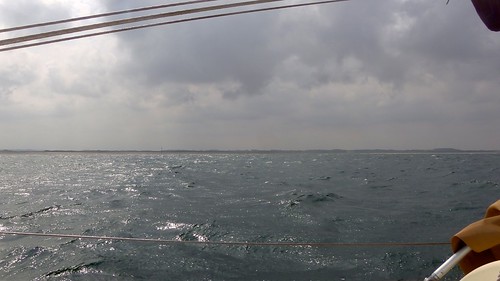
I ran on past Blakeney until I spotted the cardinal buoy at Wells with the binoculars. I tried to radio Wells but they couldn’t hear me well enough, so I called them on the phone. They confirmed what I suspected: I was much too early to get in. Tammy’s rapid progress from Sea Palling had got me there almost three hours earlier than I had planned. It was 12:30 and I wouldn’t be able to cross the bar until 15:00. Wells recommended anchoring at Holkham Bay, about a mile downwind of the entrance.
Now, if I’d been more awake I would’ve dismissed that idea, but as it was I thought that if there was enough shelter I’d be able to sleep for an hour on the anchor. So I sailed west and looked for the bay. Well, if there’s a bay there it’s not very clear, and it’s certainly not very sheltered. I sailed quite close to the shore but the wind and waves seemed too high to anchor securely. So I turned around and started beating back up towards the entrance.
In fact, it took two long tacks to make it back up, using up all the time available. If I’d anchored and slept I might have missed my chance!
Upwind, I was able to deploy a bungee to the tiller and give the autopilot a rest. Tammy Norie doesn’t make great progress to windward, but she’s very stable and reliable on an upwind course. Speed through the water dropped to 2.5 knots, but I was very confident that she’d look after herself and I was able to take several naps while comfortably tucked under the spray hood.
Finally, I arrived at the Wells cardinal just after 15:00 and called them on the radio. My friend Nick had come to Wells to meet me and had a chat with the harbour, explaining that I was solo and no doubt that I was likely to be very tired. They kindly sent the beach patrol RIB out to meet me, and they piloted me in through what seemed at the time to be a confusing mess of red and green markers.
Somehow, in my exhausted state, I was able to get fenders and mooring lines out while steering with my knees, and helpful hands got me on to the pontoon. I closed up the boat, climbed into Nick’s car, and he took me to a bed.
Later, he described talking to me during the journey as an “odd experience”.
So, a short test of my ability to cope with lack of sleep. I don’t think it’s good enough. I’m still concerned that I may be in some way unsuited to solo passages.
Time to research fatigue management plans.

